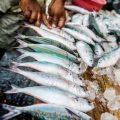Introduction to Fish Farming: Indian Scenario
Fish farming, or aquaculture, has emerged as a vital sector in India’s agricultural landscape. The country, blessed with extensive river systems, reservoirs, and a long coastline, offers immense potential for freshwater and coastal fish production. Over the past decades, fish farming has played a crucial role in supporting rural livelihoods, providing both employment and nutritional security to millions of families. In many Indian villages, fish culture is integrated with traditional agriculture, offering an additional income source that requires comparatively less land and water than other forms of animal husbandry.
What makes fish farming especially appealing to the Indian youth today is its growing profitability and relatively low barrier to entry. With government support through training programs, subsidies, and easy access to technology, young entrepreneurs find fish farming a promising avenue for self-employment. Moreover, the rising demand for quality protein among India’s burgeoning population ensures a stable market for fish products. Modern youth are increasingly aware of sustainable practices and innovative marketing strategies, making them well-suited to drive the next wave of growth in this sector.
In essence, fish farming not only contributes significantly to India’s food basket but also empowers rural communities, particularly the younger generation, by creating new opportunities for economic development and self-reliance.
Selecting Suitable Fish Species and Setting Up Ponds
When youth in India consider starting a fish farming venture, selecting the right species and constructing proper ponds are foundational steps. Indias diverse agro-climatic zones demand careful attention to local conditions, water availability, and market preferences.
Popular Fish Species for Indian Fish Farmers
The following table highlights three commonly farmed fish species in India, their unique features, and suitable regions:
| Fish Species | Key Features | Recommended Regions |
|---|---|---|
| Rohu (Labeo rohita) | Fast growth, high demand in Indian markets, preferred taste | North & East India, particularly Bihar, West Bengal, Uttar Pradesh |
| Catla (Catla catla) | Surface feeder, good compatibility with Rohu and Mrigal in polyculture | Andhra Pradesh, Odisha, Assam |
| Pangasius (Pangasius pangasius) | Tolerates varying water quality, rapid growth, good export value | Andhra Pradesh, Tamil Nadu, Maharashtra |
Pond Construction Essentials
Proper pond design is critical for productivity and sustainability. Youth must ensure the following:
- Site Selection: Choose slightly sloped land with reliable water sources such as rivers or tube wells.
- Pond Size: Typically ranges from 0.1 to 1 hectare depending on investment and available space.
- Pond Shape: Rectangular ponds ease management; depth should be 1.5-2 meters for most species.
- Dike Construction: Ensure strong embankments to prevent seepage and escape of fish during monsoon.
- Inlet and Outlet: Install filtered inlets to prevent entry of predatory fish and proper outlets for drainage.
Water Management Practices
- Water Quality: Maintain pH between 7-8; dissolved oxygen above 4 mg/litre is ideal.
- Lime Application: Apply lime based on soil pH to neutralize acidity and promote plankton growth.
- Aeration: For intensive farming or during summer months, use paddle wheel aerators or manual agitation.
- Silt Removal: Desilt ponds every 2-3 years to maintain depth and reduce organic load.
Cultural Considerations for Indian Youth
Youth entrepreneurs should consult local fisheries officers or Krishi Vigyan Kendras (KVKs) for species suitability. Community water bodies can also be leased from Panchayats for group fish farming projects—a popular practice that reduces individual investment risks and fosters collaborative spirit typical in many rural Indian settings.

3. Best Practices in Fish Feeding and Health Management
For Indian youth venturing into fish farming, understanding local feeding methods and health management is crucial to success. Here are practical tips rooted in Indian conditions and traditional wisdom:
Practical Feeding Techniques
Feeding your fish with locally available resources not only saves costs but also supports sustainable practices. Popular choices in India include rice bran, groundnut oil cake, and mustard oil cake. Mix these ingredients in a 1:1 ratio for optimal protein and energy balance. Feed should be provided twice daily, preferably early morning and late afternoon, to match the natural feeding habits of common Indian species like Rohu and Catla.
Supplementary Nutrition
Enhance the diet by adding boiled vegetables or kitchen waste, ensuring it is clean and free from chemicals. This approach reduces feed expenses while supplying essential vitamins and minerals.
Disease Control Measures
Maintaining healthy stock starts with clean water. Regularly monitor pond water for pH (ideally 7-8) and dissolved oxygen levels. Avoid overstocking, as this increases stress and disease risks. In case of fungal infections, traditional treatments like neem leaf extracts or turmeric powder can be used safely as preventive measures.
Regular Health Checks
Observe fish daily for signs of lethargy, abnormal swimming, or visible lesions. Early detection allows timely action—consult with local fisheries officers for guidance on using permitted medicines if needed.
Biosecurity Practices
Adopt simple biosecurity steps such as footbaths at pond entrances and restricting visitor access to reduce the risk of introducing diseases.
Traditional Indian Techniques
Indian farmers have long relied on organic solutions like cow dung manuring to promote plankton growth, which serves as natural fish food. Periodic use of lime helps maintain water quality and controls harmful bacteria.
By combining these best practices—leveraging both modern knowledge and traditional methods—young Indian fish farmers can achieve better yields, healthier fish stocks, and sustainable profits.
4. Cost-Effective Technologies and Sustainable Models
For young Indian entrepreneurs, adopting cost-effective and sustainable fish farming technologies is crucial for long-term profitability. The Indian context offers unique opportunities to combine traditional wisdom with modern innovations, thereby reducing operational costs and environmental impact.
Low-Cost & Eco-Friendly Technologies
Many low-cost technologies are well-suited for small-scale and youth-led fish farming ventures in India. Some popular methods include:
| Technology/Method | Description | Benefits |
|---|---|---|
| Biofloc Technology | Aquaculture system using beneficial microbes to convert waste into protein-rich feed. | Reduces feed cost by 20-30%, minimizes water usage, suitable for urban/peri-urban areas. |
| Recirculating Aquaculture System (RAS) | Closed-loop system that recycles water after filtration and treatment. | Saves water, allows higher stocking density, less land required. |
| Cage Culture in Reservoirs | Growing fish in floating cages in local reservoirs or ponds. | Utilizes existing water bodies, lower infrastructure investment, easy to monitor. |
| Integrated Fish Farming | Combines fish farming with agriculture or livestock (e.g., ducks, poultry). | Enhances resource utilization, increases farm income diversity. |
Government Schemes: PM Matsya Sampada Yojana (PMMSY)
The Government of India has launched several schemes to support youth in aquaculture. One flagship scheme is the PM Matsya Sampada Yojana (PMMSY), which provides financial assistance, training, and market linkage support. Eligible beneficiaries can receive subsidies for establishing hatcheries, pond construction, feed mills, and cold storage facilities. Young entrepreneurs are encouraged to connect with their local Fisheries Department or State Nodal Agencies to access these benefits.
Key Features of PMMSY:
- Subsidies: Up to 40% for general category, 60% for SC/ST/women/youth groups on project costs.
- Skill Development: Training programs on scientific fish farming techniques and business management.
- Market Support: Assistance with market linkages and export promotion for processed fish products.
Local Innovations for Profitability
Youth across different states have pioneered innovative approaches tailored to local conditions. Examples include organic fish feed production from agricultural by-products, use of solar aerators to reduce electricity costs, and community-based cooperative models where resources are shared among small farmers. These approaches not only cut expenses but also create a sense of ownership within the community.
Example: Community-Driven Fish Feed Units (Kerala Model)
Youth groups in Kerala have established mini-feed mills using rice bran and oil cakes sourced from nearby farms. This reduces dependency on expensive commercial feeds and boosts local employment. Such models can be replicated in other regions with minor customizations based on available resources.
By embracing affordable technologies, leveraging government schemes like PMMSY, and fostering local innovations, young Indian fish farmers can build sustainable businesses that contribute to both their livelihoods and the nation’s blue economy vision.
5. Indian Market Opportunities and Value Chain Insights
Accessing Local Mandis: The Traditional Backbone
In India, local mandis (fish markets) are the heartbeat of fish trading, especially for small-scale youth entrepreneurs. Participating in these mandis helps you understand real-time market prices, consumer preferences, and seasonal demands. To access a mandi, connect with local fisheries departments or cooperative societies; often, they issue entry passes and guide you through the basic rules. Early morning is usually the best time to sell, as buyers—ranging from retailers to households—prefer fresh catch. Always ensure your fish is well-iced and hygienically handled to fetch premium rates.
Tie-Ups with Fish Traders: Building Reliable Networks
Forging relationships with established fish traders can secure regular orders and reduce marketing hassles. Many traders operate on credit; however, it is advisable to have clear agreements regarding payment cycles and quality expectations. Attend fishery expos or join WhatsApp groups of local aquaculture communities to meet trustworthy traders. For youth, learning negotiation skills and understanding local languages like Hindi, Telugu, or Bengali helps build rapport and trust in business dealings.
Leveraging Online B2B Platforms: Digital India Advantage
The digital shift has opened new avenues for young fish farmers. Registering on B2B platforms such as DeHaat, AgroStar, or even dedicated seafood portals like FreshToHome allows direct access to wholesalers, restaurants, and caterers across cities. Create a professional profile highlighting your farm practices (organic feed, water quality), upload photos of your produce, and maintain prompt communication. Many platforms offer logistics support for doorstep pickup and delivery, making it easier to expand your market beyond your home state.
Meeting Diverse Regional Consumer Demands
India’s culinary diversity means each region prefers different fish species—Rohu in North India, Catla in Bengal, Seer fish in Tamil Nadu, or Prawns along the coasts. Study local consumption trends via social media surveys or by talking to restaurant owners. Adjust your production schedule accordingly; for example, stock more Rohu before Durga Puja in Bengal or Seer fish ahead of Onam in Kerala. Offering live or freshly dressed fish can help you stand out in urban markets where freshness is highly valued.
Key Takeaway for Indian Youth
Entering the Indian fish market requires blending traditional wisdom with modern tech savvy. By actively engaging with mandis, building trader partnerships, leveraging digital platforms, and understanding regional tastes, young entrepreneurs can position themselves for sustainable growth in the evolving Indian aquaculture landscape.
6. Leveraging Youth Networks, Training, and Success Stories
Harnessing the Power of Youth Groups
India’s youth are increasingly coming together to form fish farming collectives and cooperative societies, particularly in states like West Bengal, Andhra Pradesh, and Odisha. These groups help members pool resources, access better fish seeds and feed at lower prices, and share knowledge about sustainable practices. By joining local youth clubs or self-help groups (SHGs), aspiring young fish farmers can build strong support systems and learn from each other’s experiences. Collaboration within these networks often leads to higher productivity and improved marketing strategies for local markets as well as online platforms.
Government & NGO-Led Training Opportunities
The Indian government actively encourages youth participation in aquaculture through schemes such as PM Matsya Sampada Yojana and initiatives by the National Fisheries Development Board (NFDB). These programs offer technical training on hatchery management, water quality control, disease management, and value addition techniques. Many NGOs also partner with state fisheries departments to run workshops in rural areas, focusing on practical skills that can be immediately applied by young entrepreneurs. Attending these training sessions helps budding fish farmers stay updated on the latest technology and best practices, while also opening doors to government subsidies and financial support.
Inspirational Indian Case Studies
Youth-Led Fish Farming Success in Assam
In Assam, a group of college graduates started a small-scale fish farm using biofloc technology with minimal investment. Through consistent learning and networking with experts via WhatsApp groups, they managed to triple their output within two years. Their story has inspired many other young people in their community to take up aquaculture as a promising livelihood.
Women Empowerment in Tamil Nadu
A women’s SHG in Tamil Nadu received hands-on training from an NGO on integrated fish farming with poultry. By adopting scientific feeding methods and direct-to-consumer marketing through local WhatsApp business accounts, the group not only improved their incomes but also gained recognition from the district administration for innovation.
The Digital Marketing Edge: Andhra Pradesh Example
Young entrepreneurs in Andhra Pradesh have leveraged digital marketing through Facebook Marketplace and regional apps to sell fresh fish directly to urban consumers. Their agility in adapting to online sales channels during COVID-19 lockdowns ensured steady revenue while motivating others to embrace new marketing avenues.
Motivating the Next Generation
These stories show that Indian youth can succeed in fish farming by tapping into collective strength, ongoing training, and creative problem-solving. Whether you are just starting or looking to scale up your business, connecting with youth networks, participating in skill-building programs, and learning from real-life success stories can provide both inspiration and practical guidance for a thriving future in Indian aquaculture.


